Dharma Songs v2 is an interactive sound installation.
Please view the video for full comprehension of the work.
A viewer is invited to dip one of six fresh flowers into the water of the gong. Suddenly, a voice will start playing (from a hidden speaker within the wooden structure). Viewers can dip as many flowers as they desire, creating an unintentional symphony of narratives and voices.
All six voices belong to individuals who are close friends or family. I had asked them to respond to the following questions via voicenote: "If you could share or ask something with one of your ancestors, what would you say?" and "What's something you're grateful for that you've received from your family?"
The installation consists of a weathered 150 year old iron gong connected to a mini computer, which, in turn, is connected to electric wires covered in banana leaves that are linked to living flowers. When the petals make contact with the water in the gong, an electric circuit is completed, sending a signal to play a designated voice.
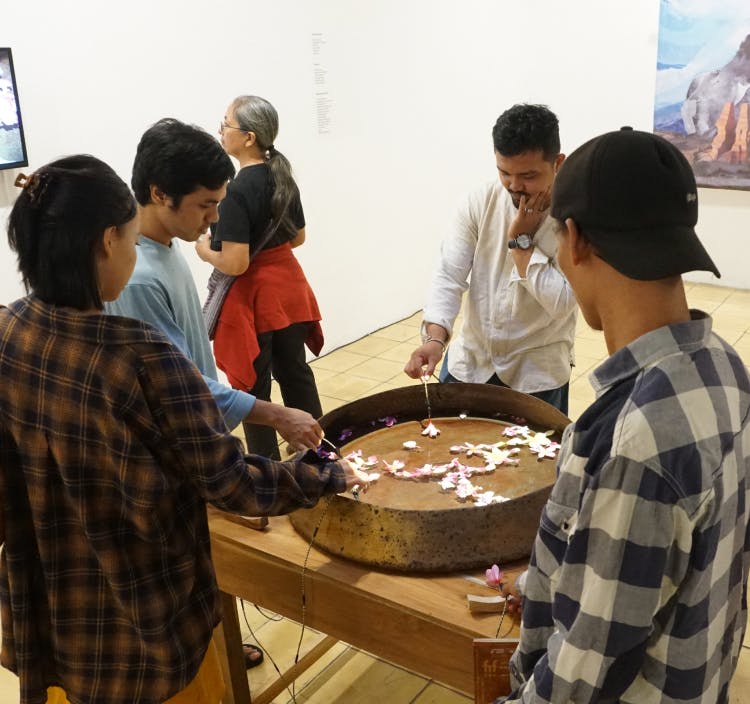
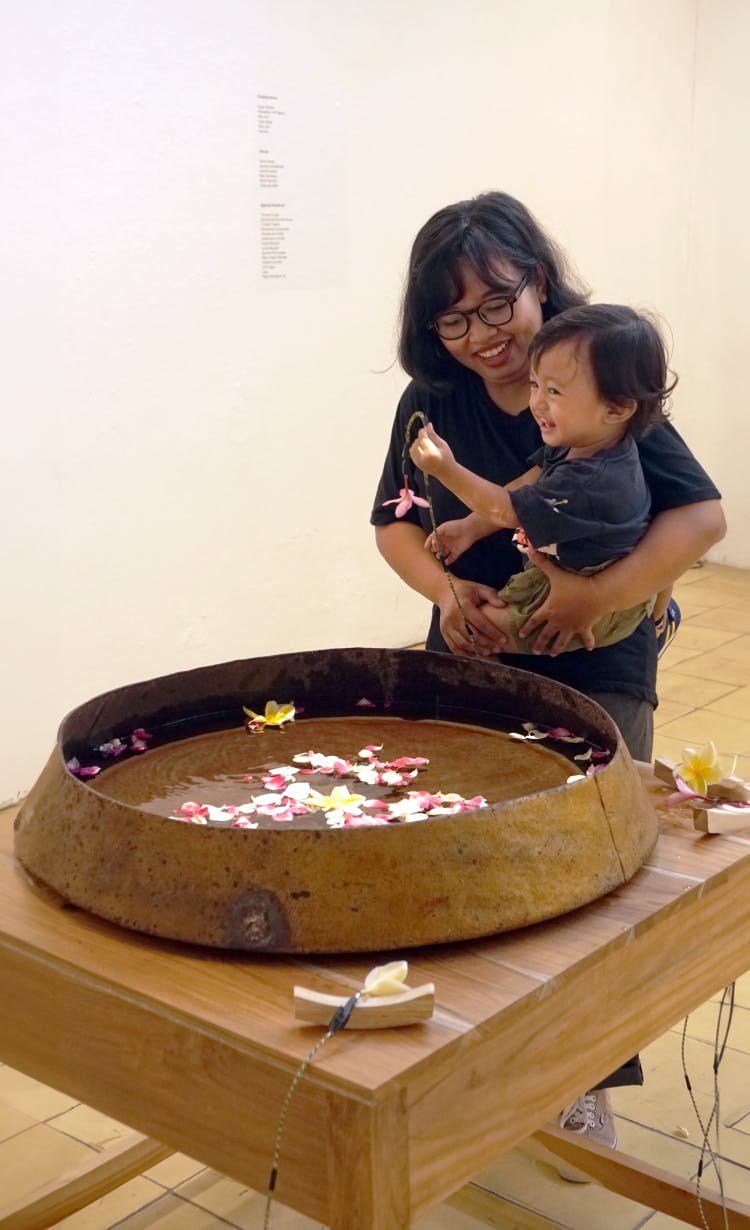
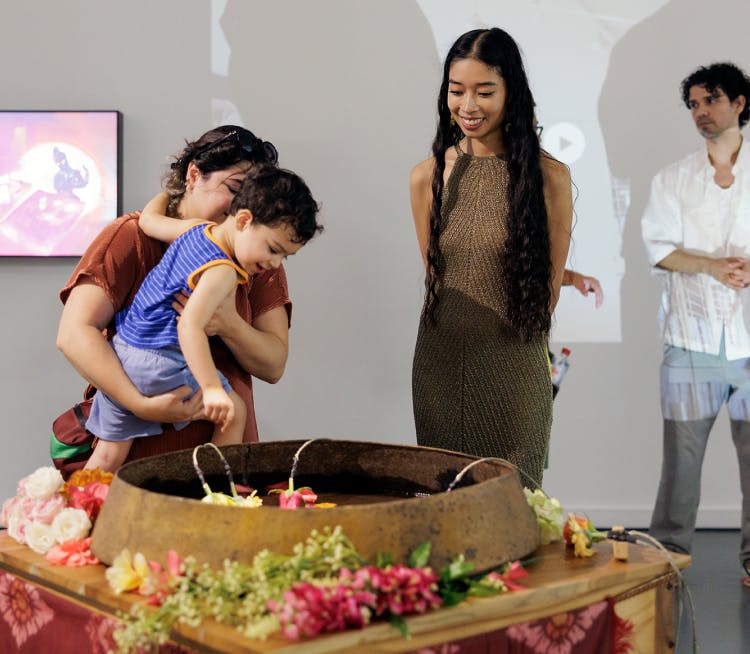
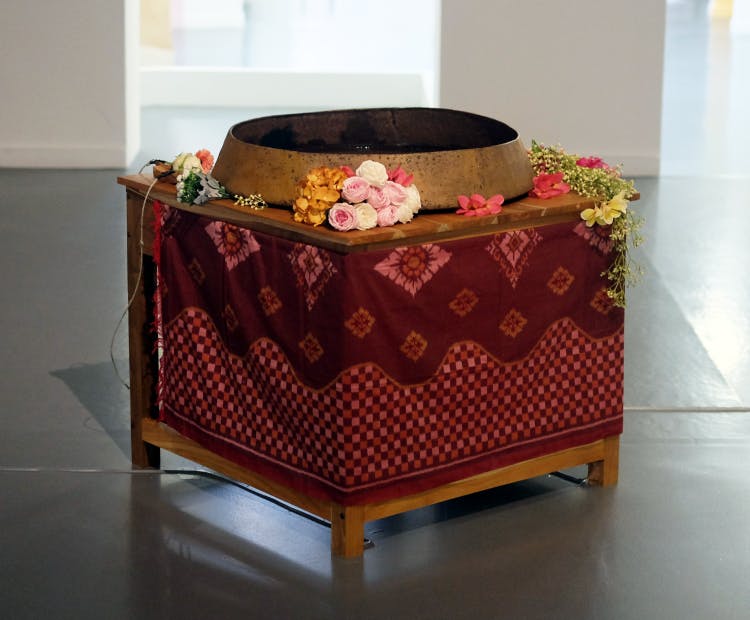
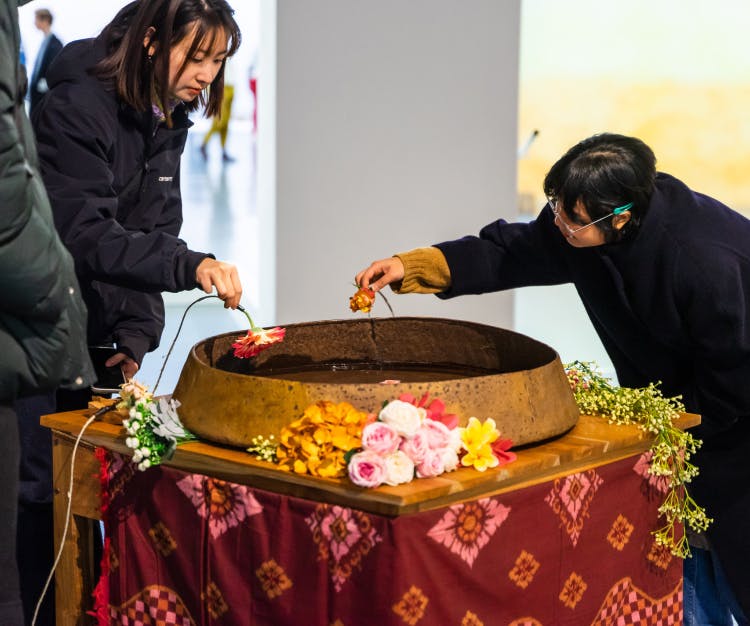

Top to Bottom: Opening show at Cemeti Institute of Art and Society (June, 2023); Artist Devetroo and her son Bhumi playing with the work (Yogyakarta, Indonesia); opening groupshow at TENT (8 september 2023); video documentation at TENT. Photos Syahidin Pamungkas, Muhammad Dzulqornain and Aad Hoogendoorn. Video by Settia Tin.
Inspiration
The work draws inspiration from modern DJ equipment, where a touch on a button can trigger a pre-recorded sound, and traditional Khmer and Javanese instruments, illustrated through the use of a gamelan gong. I am fascinated by traditional instruments and their use: some are said to be habitats of spiritual power, able to attract attention from other realms.
I envisioned Dharma Songs v2 as my artistic, modern take on a traditional Southeast Asian instrument: modern in its electronic approach, omitting digital voices from an electronic speaker: traditional in its attempt to traverse realms through voice, sound, and ritual.
My interest in voice, sound, and music has been long-standing. I have a deep and genuine connection with music, and I spent a few years of my life as a DJ in London. What fascinates me the most is how sounds can evoke such incredible intimacy, as if traversing through time and space, instantly evoking memories and emotions.While creating this work, I felt as if all my friends were in the room with me, and I sensed glimpses of their love, compassion, grief, and longing.
The work's title is inspired by a uniquely Khmer Buddhist chanting tradition called "smot," which roughly translates to Dharma Songs*. Smot is often performed at the deathbed and during death remembrance ceremonies and has been passed down from generation to generation since the 4th century. It is often described as melodic, mournful, and emotional. *Trent Walker - Until Nirvana's Time: Buddhist Songs from Cambodia (2022)
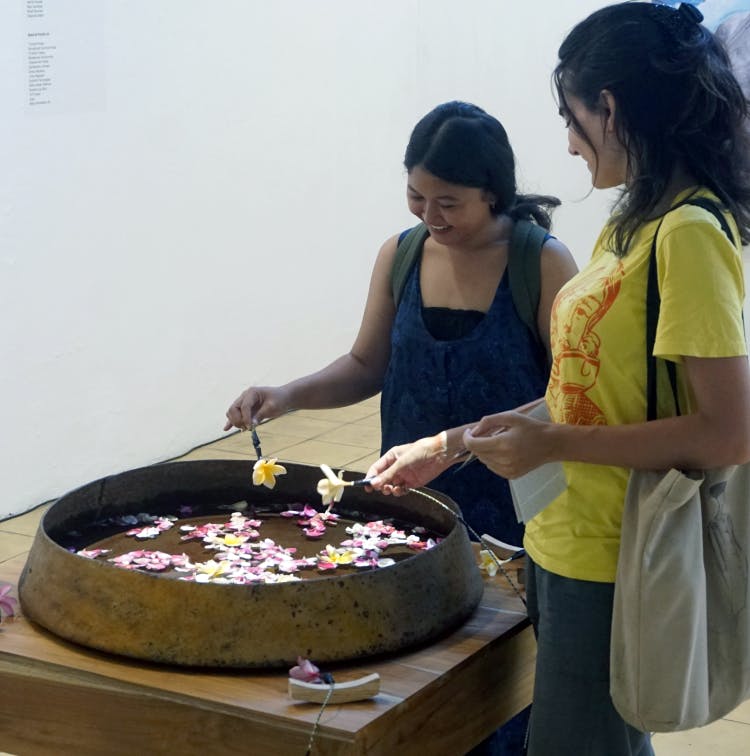
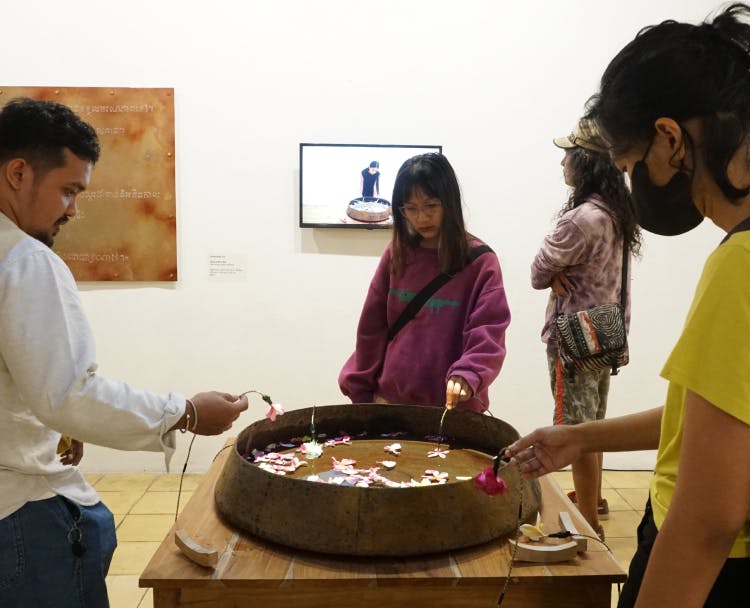
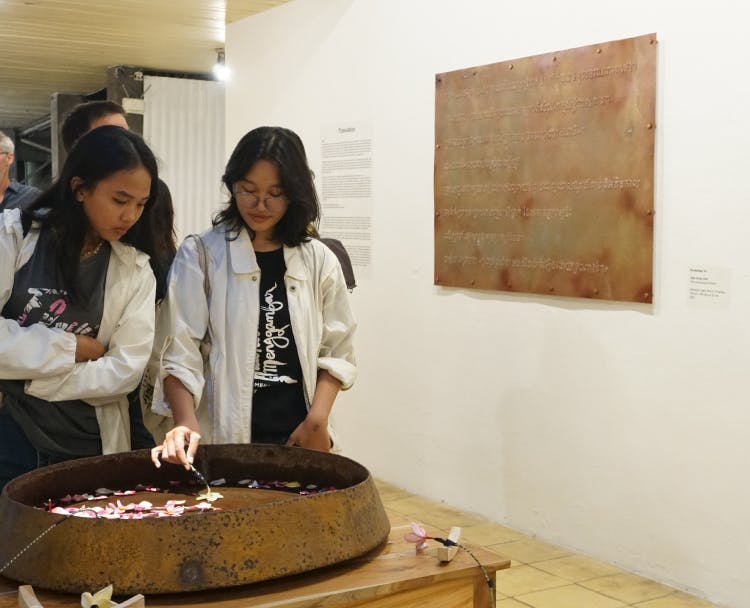
Motivation
Reflecting on motivation:
"When post-colonial governments write histories that sweep their atrocities under the rug, who will bring justice for the lives lost and destroyed by them? The heaviest burden falls on the victims' families, who have been deprived of healthy fathers, mothers, or grandparents. The absence of accountability by the West has disastrous consequences: it permeates global worldviews, manifesting as racism and xenophobia, sometimes even adopted by the descendants themselves.
This work is an attempt for rebalance, with particularly the descendants and their current social realities in mind. Following traditional Khmer and Javanese instrument making, where musical instruments act as mediators between earthly matters and the divine, this installation/instrument symbolizes a veneration offering, where we call upon the souls of our ancestors and thank them for their love, wisdom, and resilience."
A post exhibition booklet has been developed capturing the development of this works and others. Please view the digital version here. A printed version with 300 copies will be released soon.
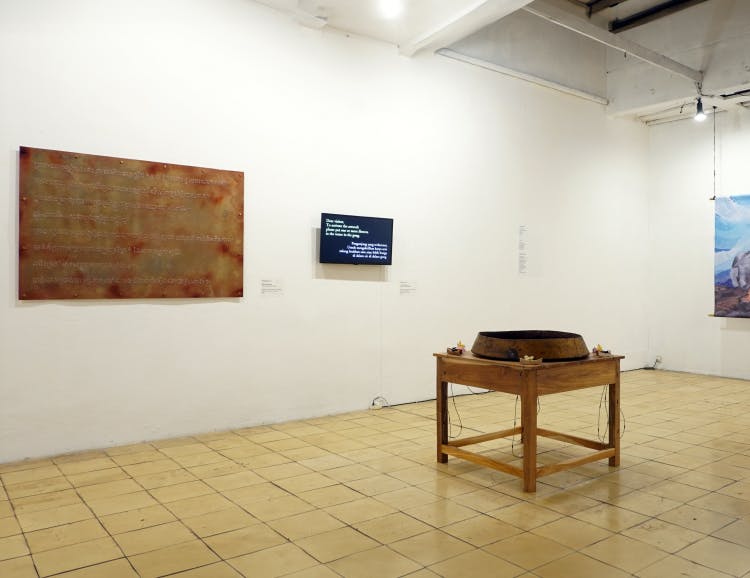
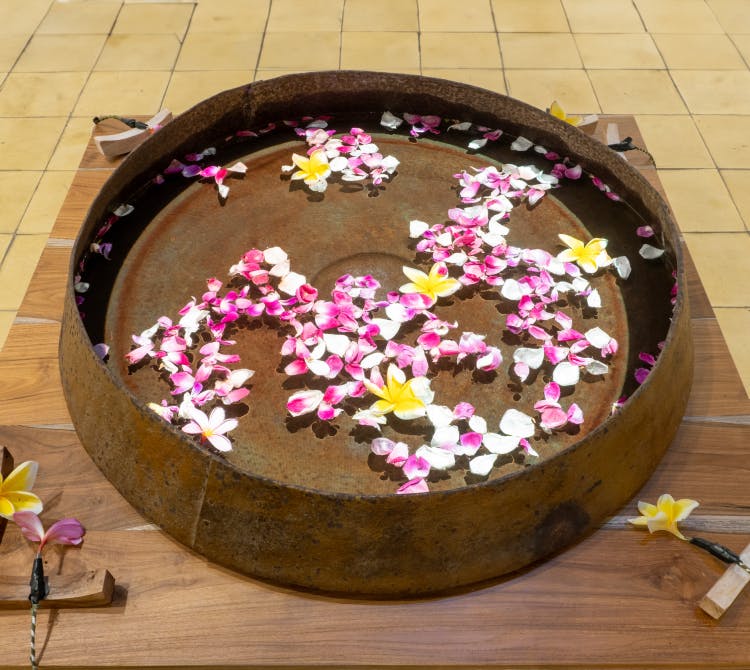
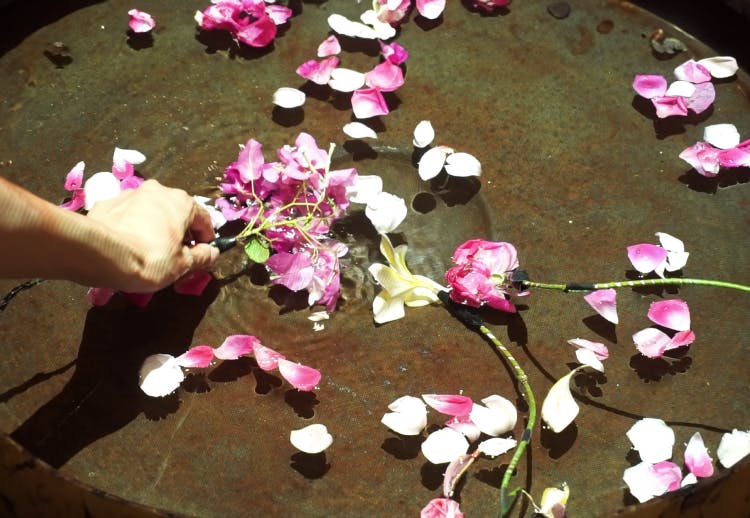
Made possibly by:
Dharma Songs v2 was developed during a 3 month residency at Cemeti Institute for Arts and Society, Yogyakarta Indonesia, funded by the Mondriaanfonds. In this iteration of the work, the voices channeled are: Goos Picauly, Jerome Ince-Mitchell, Jannat Hussain, Ratu Saraswati, Micah Bournes and Stéphanie Mälm. The Rotterdam iteration includes the voice of Parham Rahimzadeh. The work was developed with the help of: Ragil Aribowo (engineer), Kak Ros Studio (carpenter), Muhammad Dzulqornain (lighting and video), Muhammad Eva Nuril Huda, Tri Mukti Yuliana, Ridho Afwan Rahman, Theresia Ika Pratiwi and Thomas Picauly. Photography by Syahidin Pamungkas and Muhammad Dzulqornain.
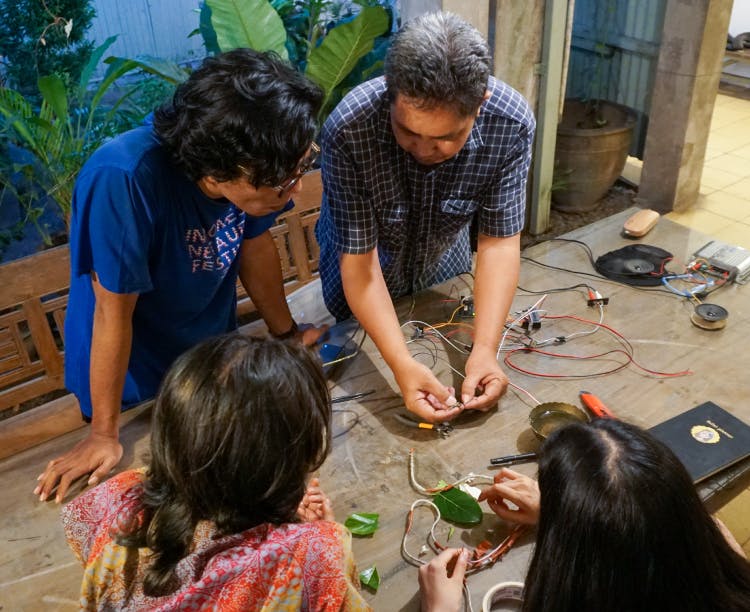
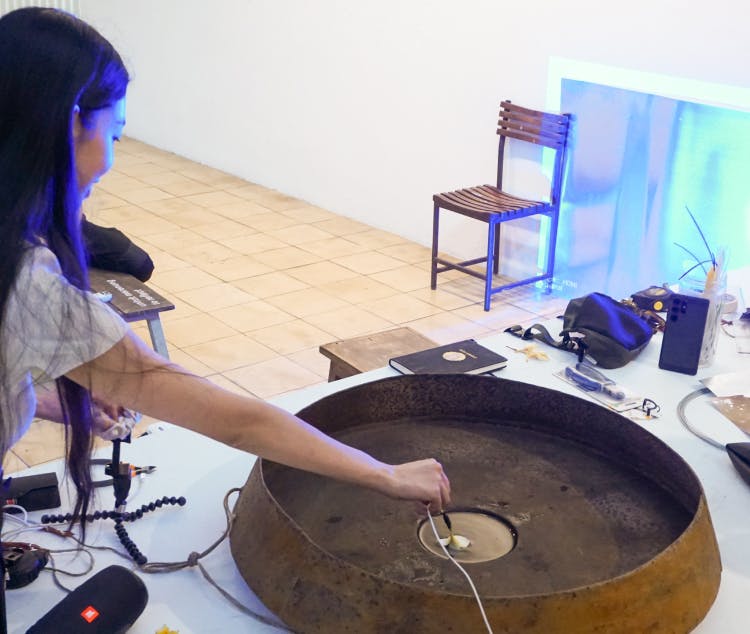
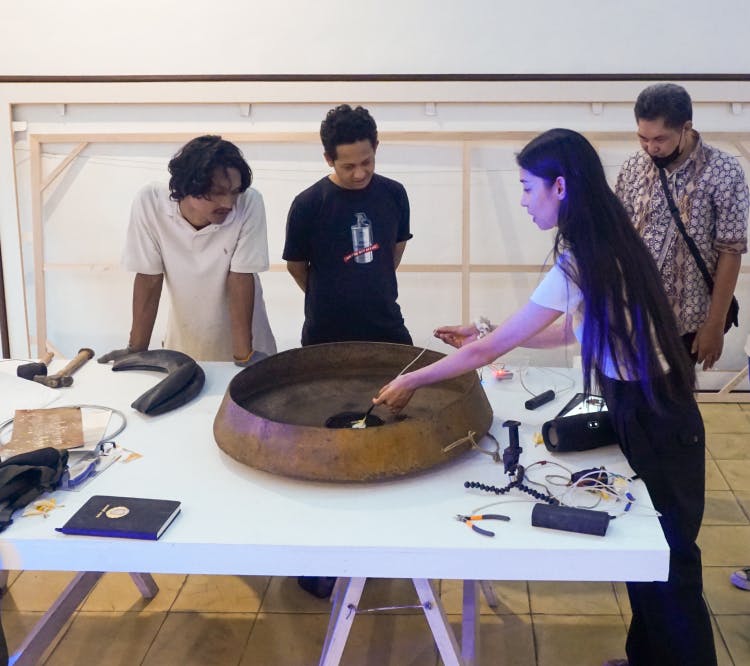
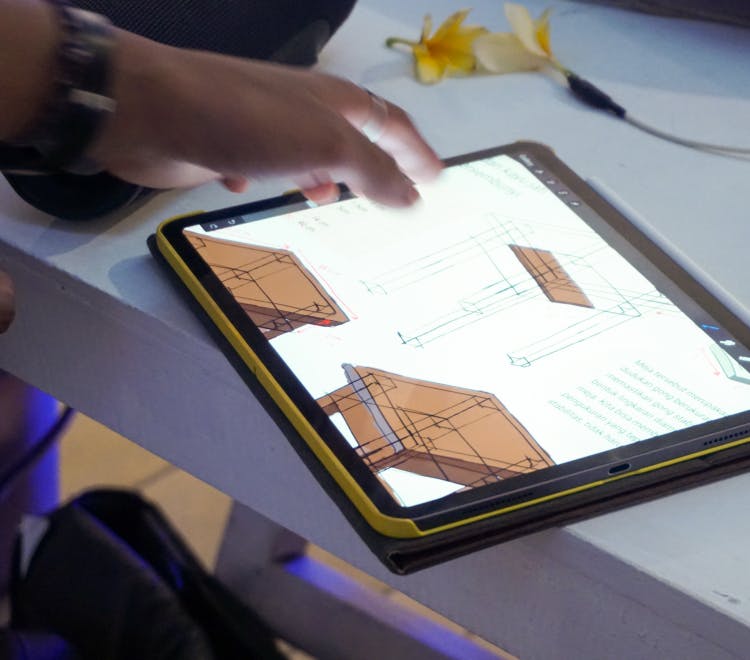
Wider interest
During this residency, I had the opportunity to delve deeper into my interest in Hindu-Buddhist iconography, arts, and cosmology. This worldview developed in the broader Southeast Asia region during the first millennium as a result of Indianization. I believed that the existing and historical commonalities in Indian culture suggested significant exchanges between Hindu-Buddhist kingdoms, especially in Cambodia (Khmer) and Java during the 9th-10th centuries—a relatively obscure history between these civilizations. By collaborating with local artists and historians who had a deeper understanding of this subject than I did, I strove to embrace perspectives that extended beyond Western (and Dutch postcolonial) ideas regarding the history, heritage, and beliefs of our homelands.
Some details about materials used:
- The act of picking up a flower and dipping it into water is inspired by the Buddhist ceremony of bathing a small Buddha statue with a flower during Vesak/Waisak (Budhha his birthday).
- The Rotterdam iteration of this work includes a Balinese ikat (traditional weaving), modeled after the oldest Balinese inscription (Belanjong pillar)
- The fresh flowers used in the Yogyakarta show are yellow and pink primeria flowers. These are considered sacred flowers in South East Asia and are coincidentally called “Bunga Kamboja” (Cambodian flower) in Bahasa Indonesia
- The fresh flowers used in the Rotterdam show are roses, following Javanese offerings ceremonies, known as sajen. In Yogyakarta show these red and white roses were the petals in the water.
- The table is made of teak wood, referring to the teak harvesting activities of the Kalang people, a Javanese sub-ethnic group rumored to be descendants of Khmers. Kalang's teak craftsmanship is said to be the result of their being outcast to the woods by the Sultanate and later by the Dutch.
- In the Rotterdam iteration artificial flowers are used, (including the Bunga Kamboja) they are from Bali's oldest and largest flower shop.
- The Rotterdam iteration includes a broche from a traditional batik store in Yogyakarta (normally used to tie a shawl for traditional attire) and a Surinamese-Hindu ribbon from Rotterdam markets.
- The Rotterdam iteration includes the champaca scent in the form of an essential oil in the water. Champaca is considered sacred as it was used as the tree for achieving enlightenment by Buddha. Champaca flowers are used in South Asia for worship ceremonies, where they float in bowls of water, and in Southeast Asia is grown inside temple's compounds. The magnolia plant family, to which champaca belongs, is one of the oldest flower families - with fossilized magnolia flowers dating back around 95 million years.
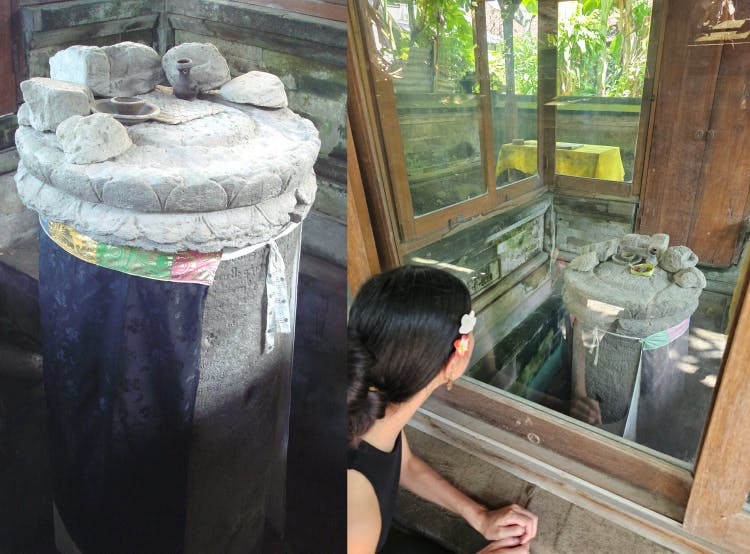
Belanjong pillar (914 CE) which still receives offerings today.
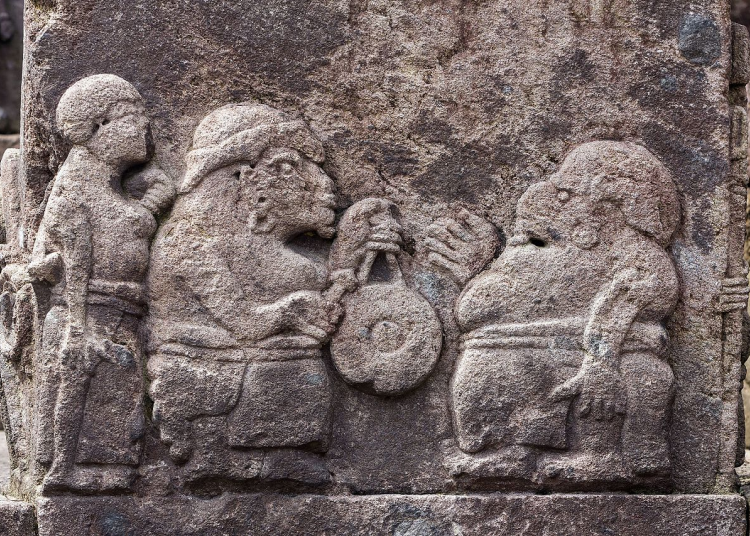
The act of showering a Buddha. at Vesak/Waisak, July 4, Borobudur, Indonesia.
Past shows
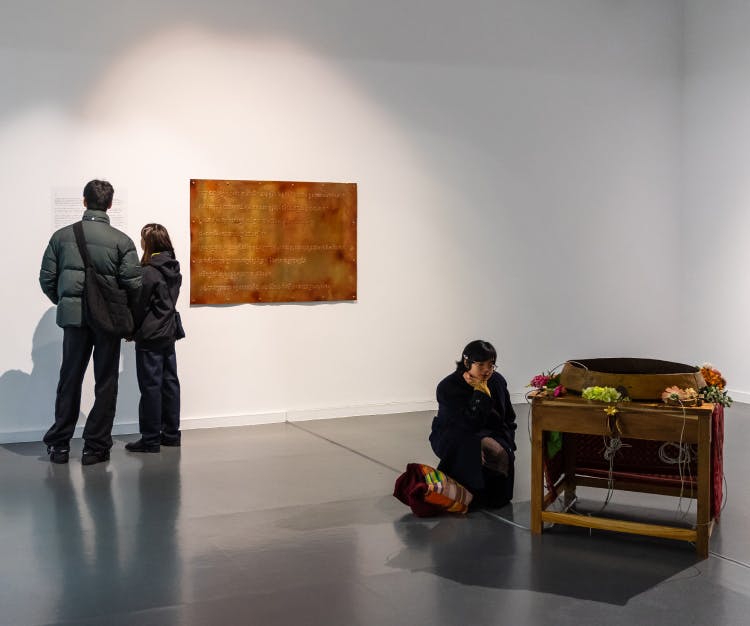
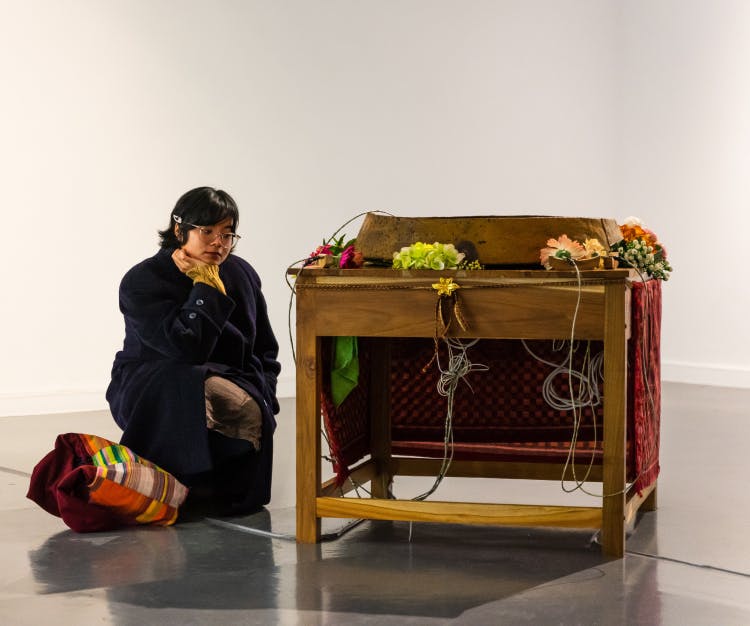
The work was on show at Cemeti Institute for Arts and Society in June 2023 in Yogykarta. It was shown again as part of the Dolf Henkes Prijs 2023 groupshow at TENT in Rotterdam, where it won the 10th edition of the Dolf Henkes Prijs. It was on show for about 4 month at TENT and closed in January 2024.
This video is a tour of the TENT show, including two more works (Tails of the Past and Sathu Studio). Below is a 3D scan of the show, which allows you to see the works up close.

